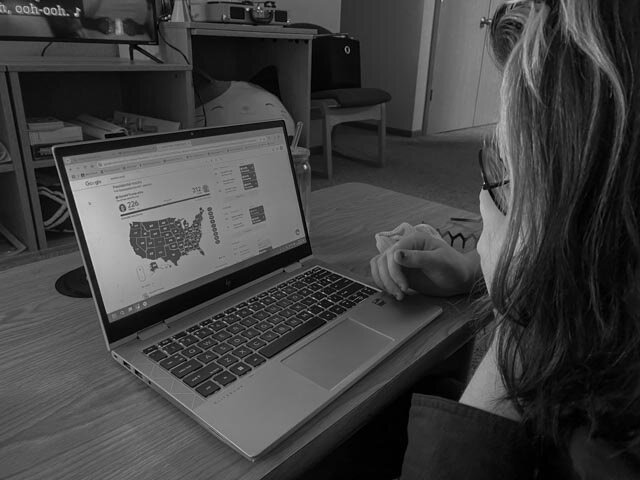Brent Quam/Winonan
Racial diversity in American universities is being threatened, a speaker said at Winona State University Feb. 19.
Dr. Ibram Rogers, author of the 2012 book, “The Black Campus Movement: Black Students and the Racial Reconstitution of Higher Education, 1965-1972,” is an assistant professor in the department of African Studies at the University of Albany.
Rogers’ book chronicles the efforts of thousands of college students including blacks, whites, Native Americans, Asian Americans and Latinos during the years between 1965 and 1972 as they struggled to reform in college and university life what Rogers referred to as the “Racial Constitution of Higher Education.”
Rogers described this Constitution as having four parts: “a moralized contraption, a standardization of exclusion, ladder altruism and a normalized mask of whiteness.”
Rogers cited early Historically Black Colleges and Universities and their post-Civil War administrators’ use of the Hampton Idea, a doctrine that taught, “Black people could be educated for submission,” he said.
Antiquated ideas like these have been to a large extent excised from higher education by the efforts of those who participated in the New Negro Campus Movement between 1919 and 1935, the Civil Rights Movement between 1935 and 1965, and the Black Campus Movement of the late 1960s, Rogers said.
Rogers said Feb. 13, 1969 was the high point of the movement.
“Black students organized, protested and made demands in every American state except Alaska,” he said. “They actually may have there, but I haven’t found any evidence.” Protests involved marches, building take-overs, and boycotts.
Rogers described a march by student protestors from the University of Wisconsin- Madison, to the Capital Building.
On that date, Rogers said, “Their bodies may have been freezing, but their mouths were on fire.”
Ultimately, Rogers said the movement failed. “These students were not successful in revolutionizing higher education,” he said. “They were, however, successful in changing the ideals of higher education.”
As a result of the Black Campus movement, Rogers said, diversity centers and black studies programs sprung up in colleges and universities across the United States. From 1965 to 1974, the percentage of blacks in the total student body of higher education in the United States doubled from 4.5 to 9 percent.
However, Rogers said the gains made by the Black Campus Movement are being eroded every day.
“Academic racists have had to change their strategy,” Rogers said. “They’re using race neutrality, or ‘reverse discrimination’ as justifications for what they’ve always done.”
Rogers cited a recent case in Arizona where efforts are being made by the governor to dismantle all education programs making any reference to any race.
“Affirmative action may be eliminated in several months,” Rogers said. “After that, in a push to become a color-blind society, anything race-specific. That includes diversity departments and African Studies.”
Jessica, a Winona State student who attended the presentation, said a color-blind society is a step backward. “They’re trying to sweep issues under the rug so they don’t have to hear about them anymore.”
Jerad Green, another student, said, “I think it’s crap. Being color-blind is the new racist. People’s heritage is being diminished. They’re being assimilated.”
Contact Brent at [email protected]









































